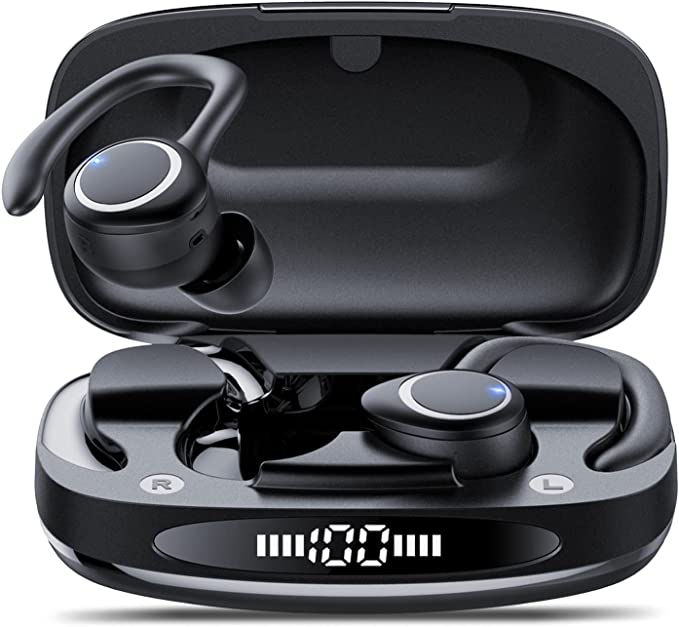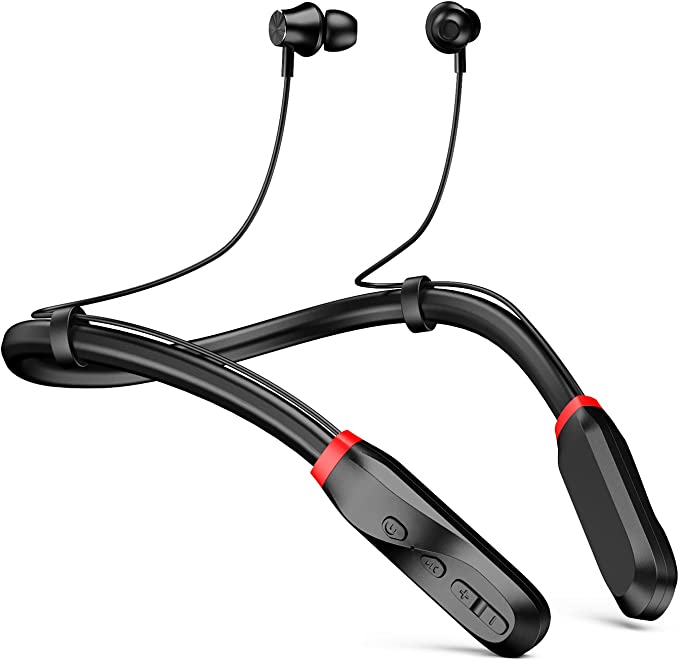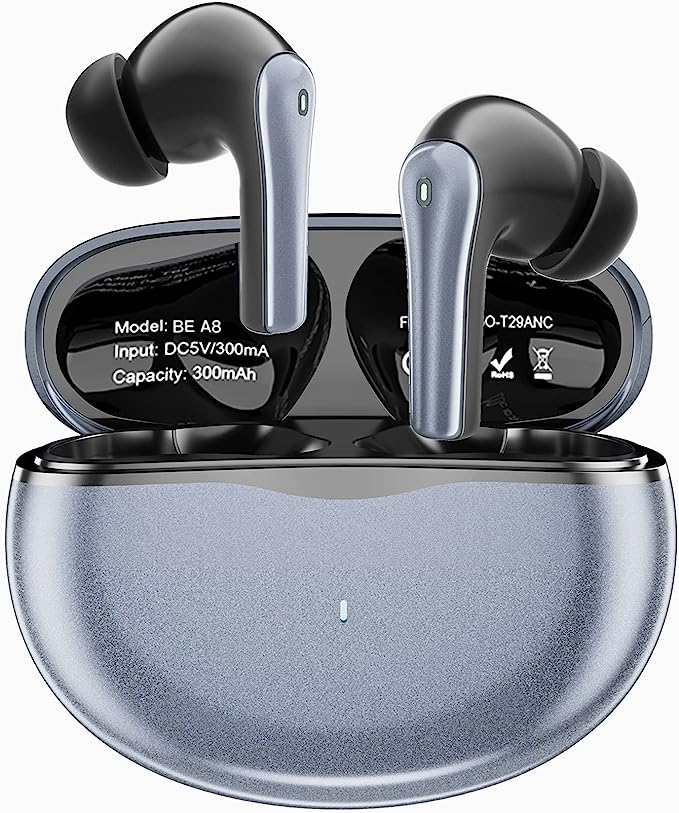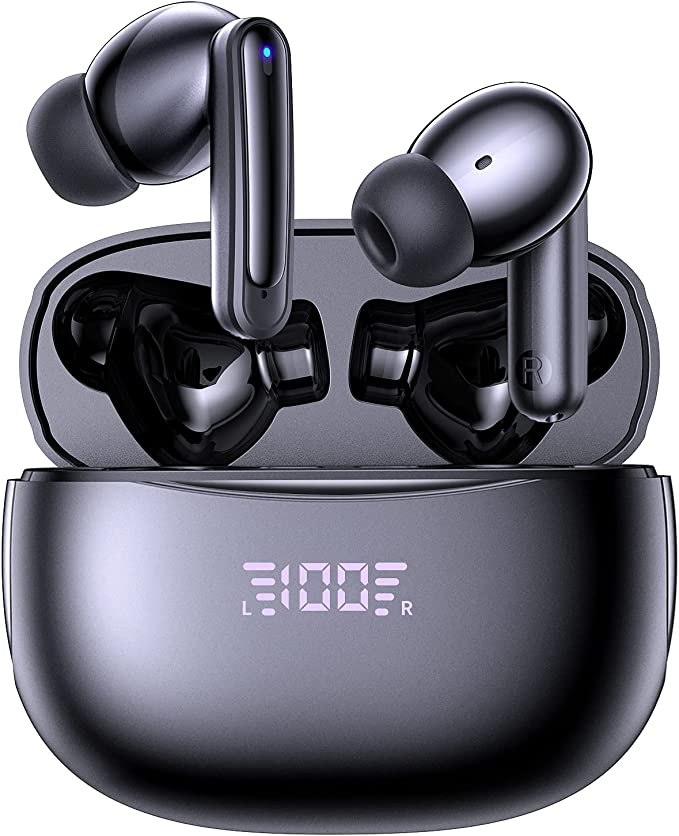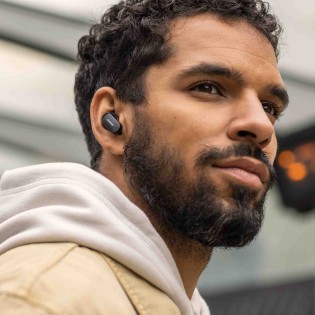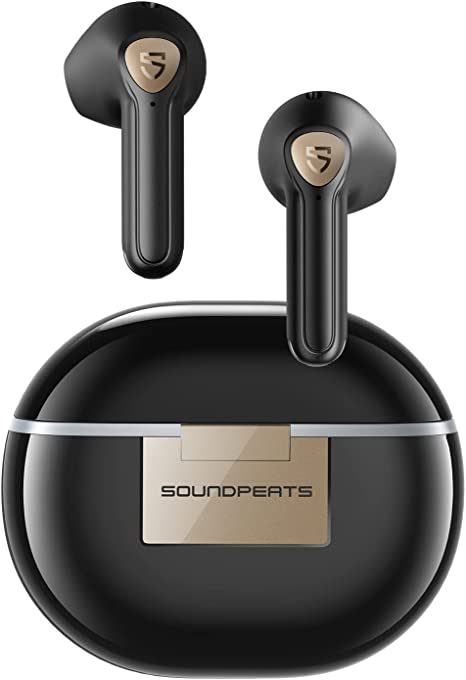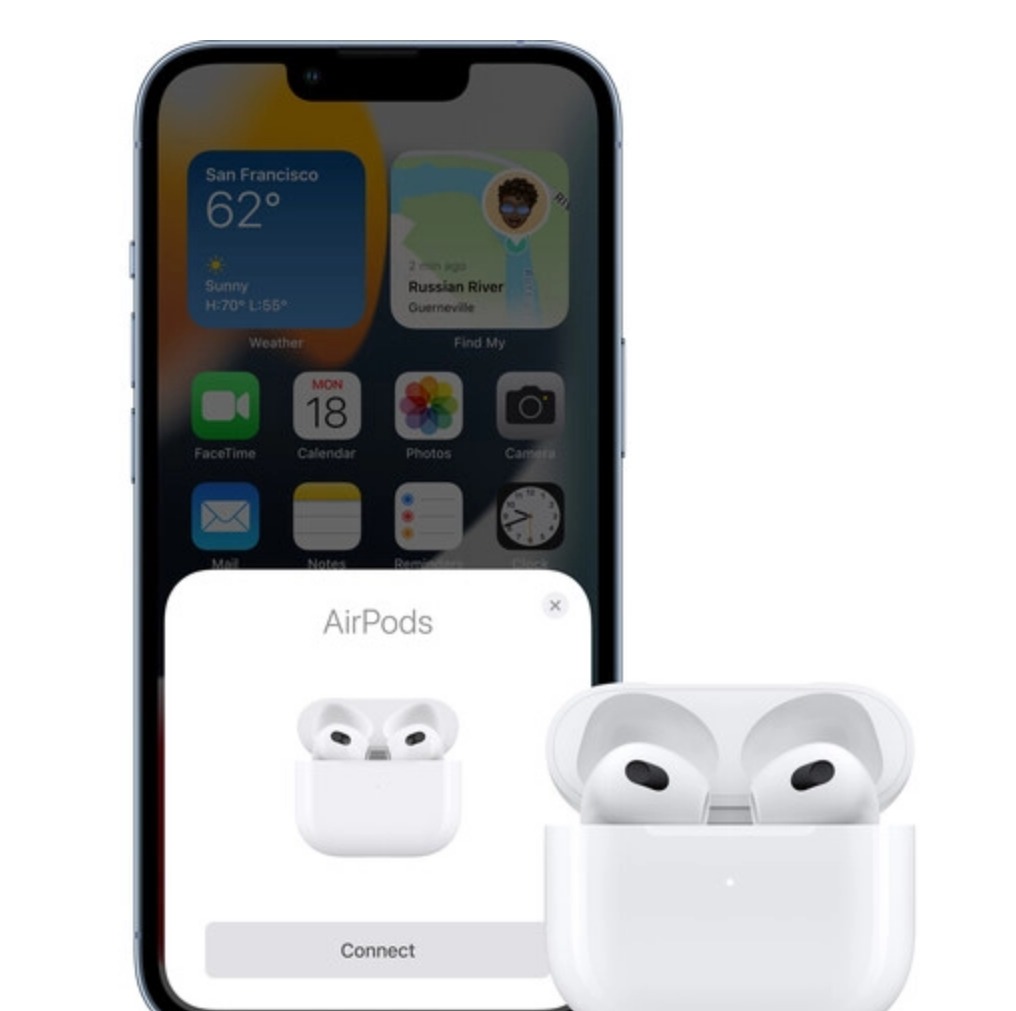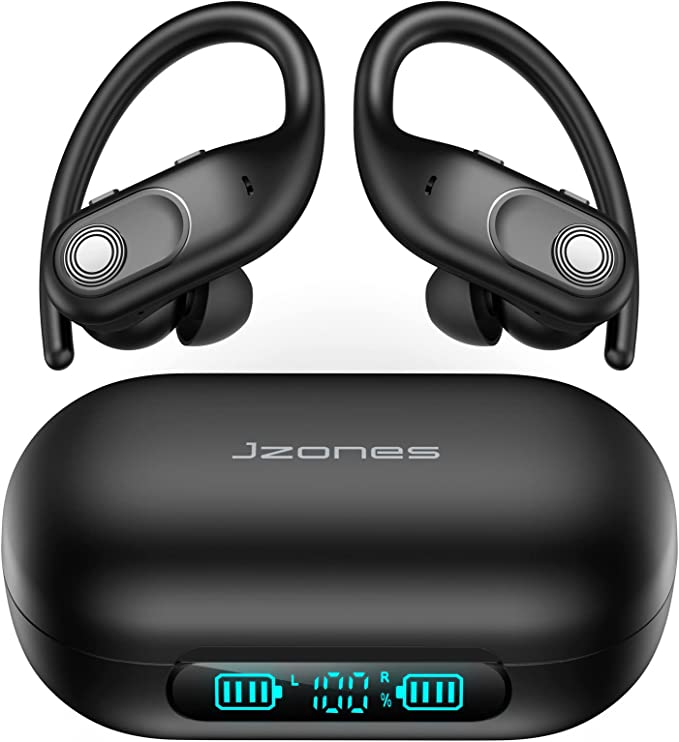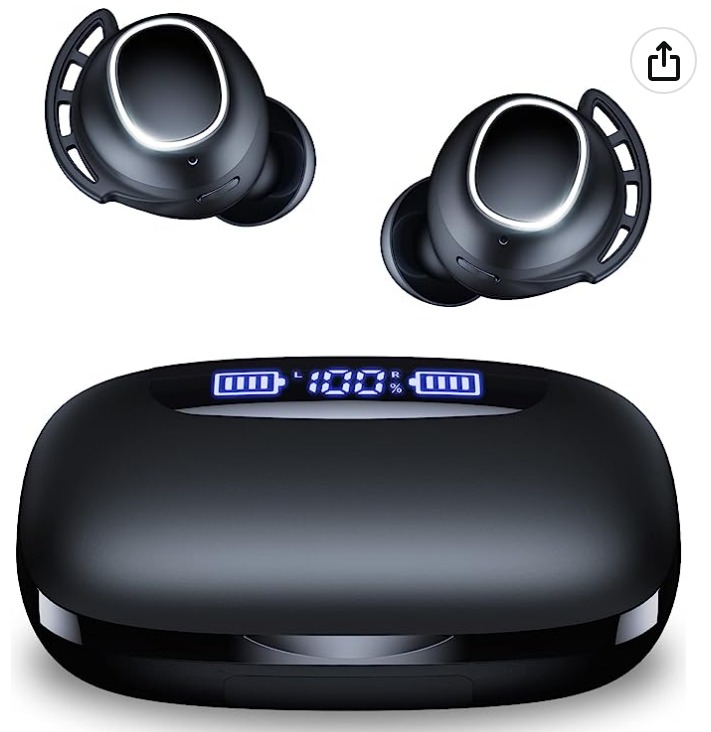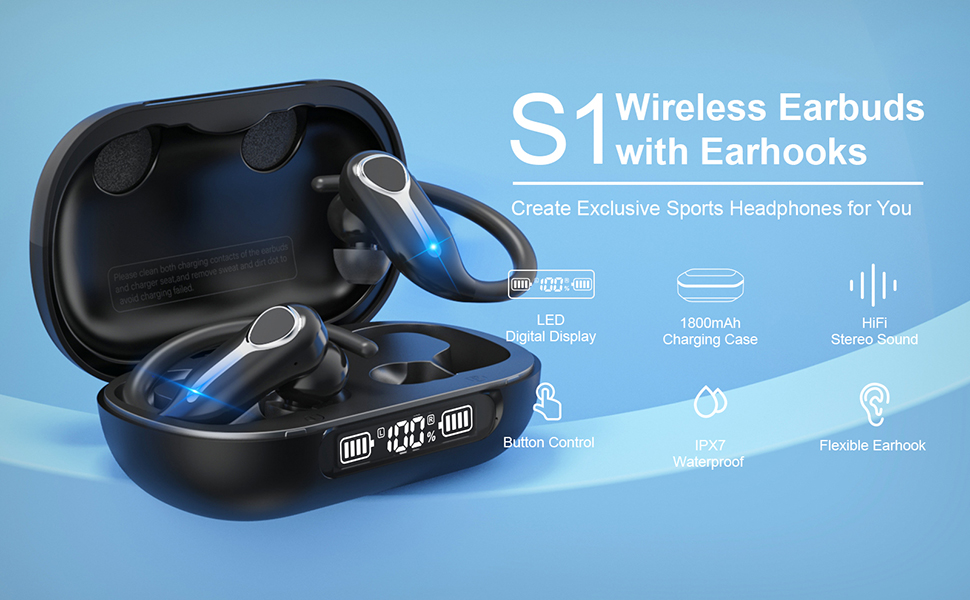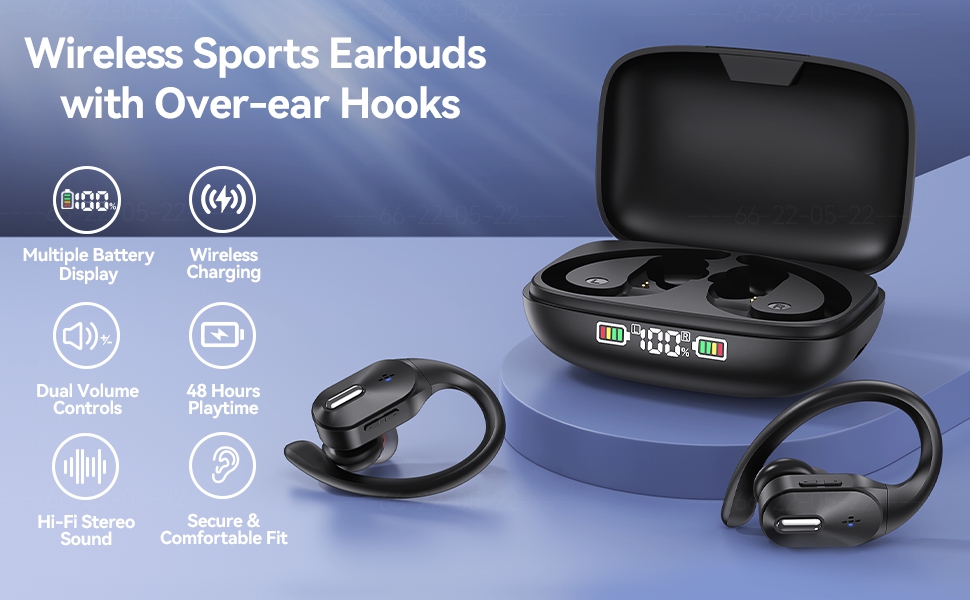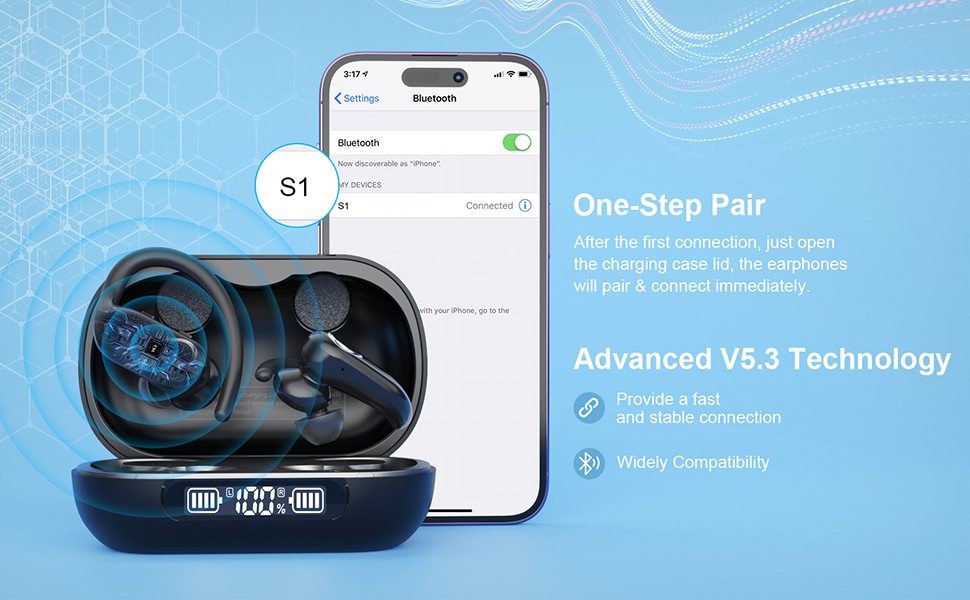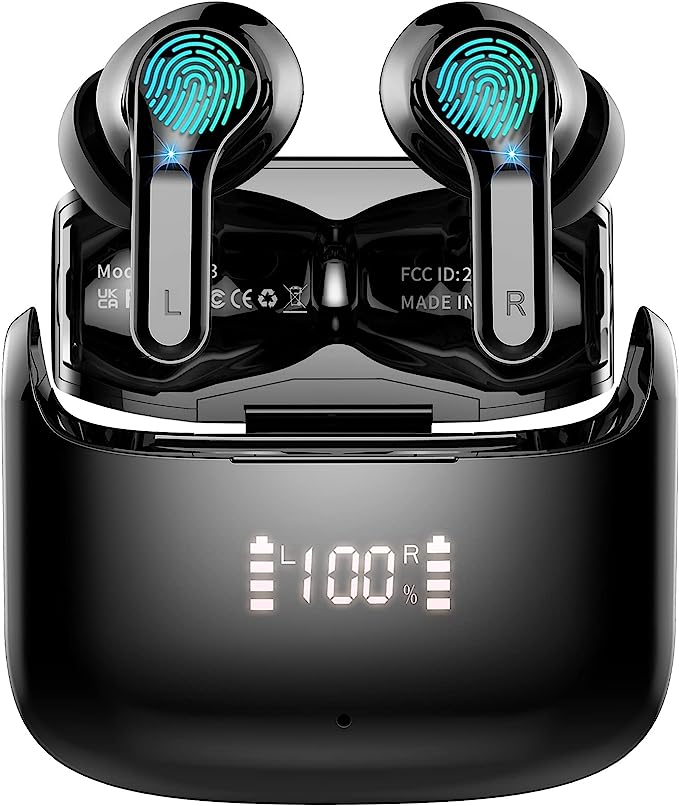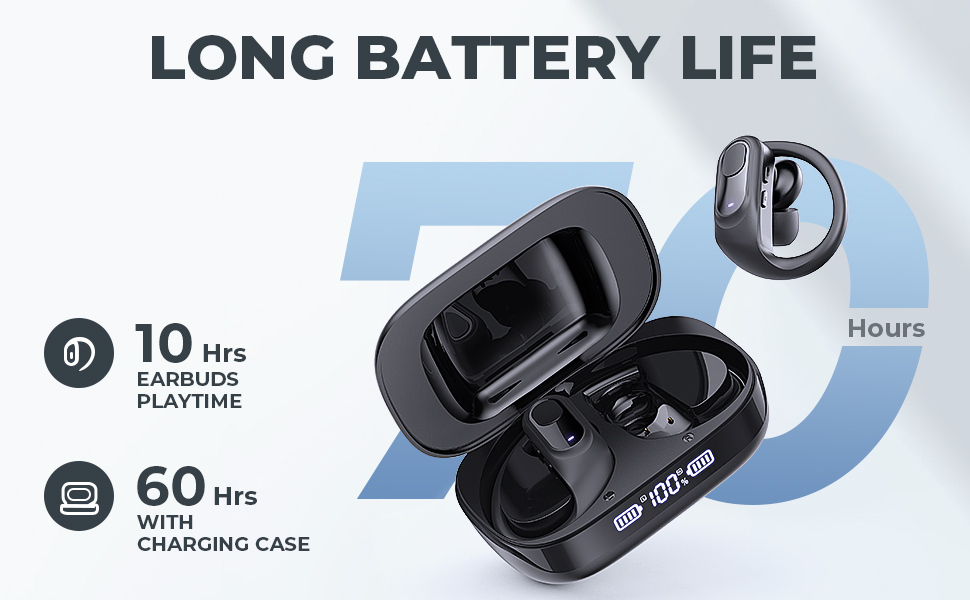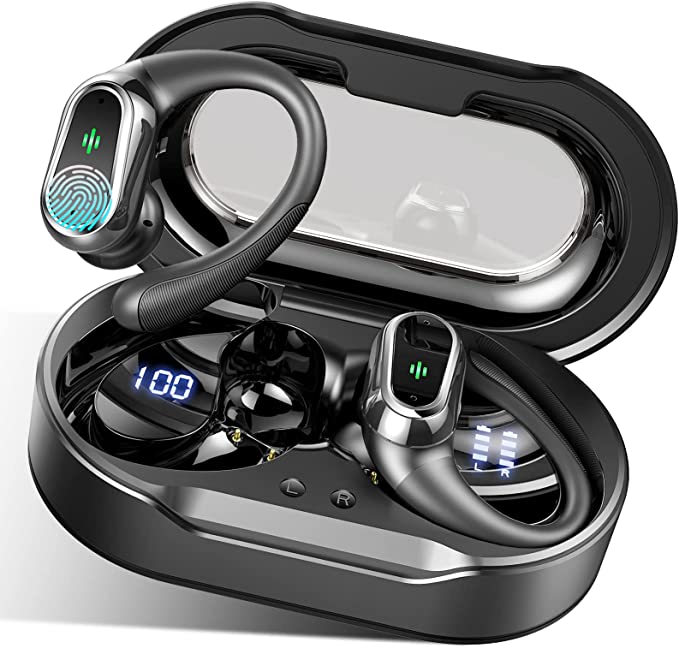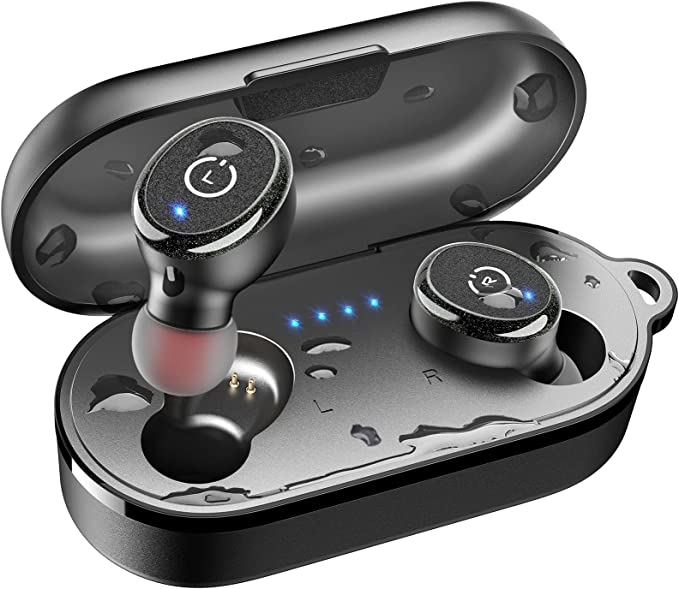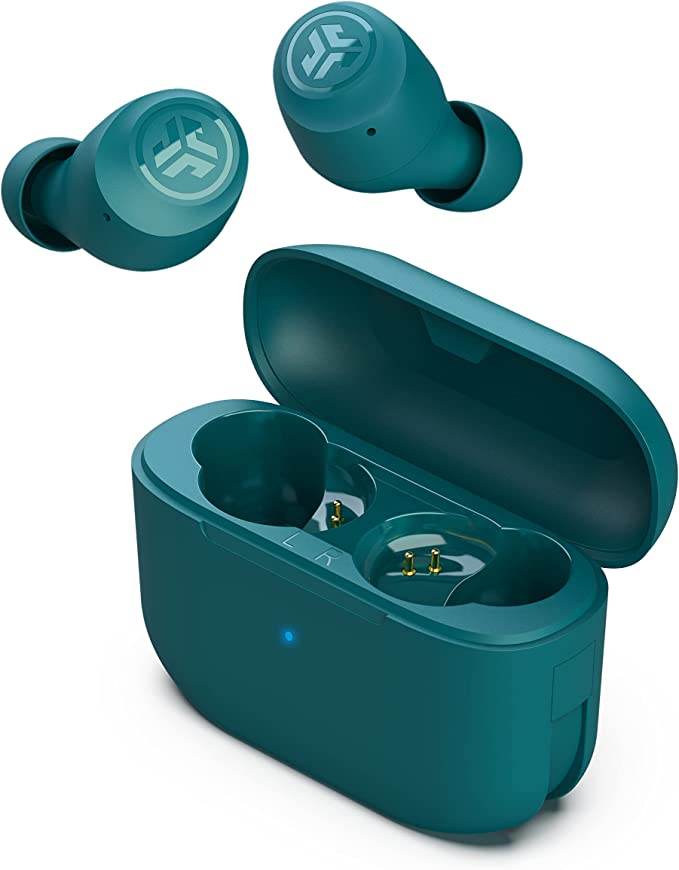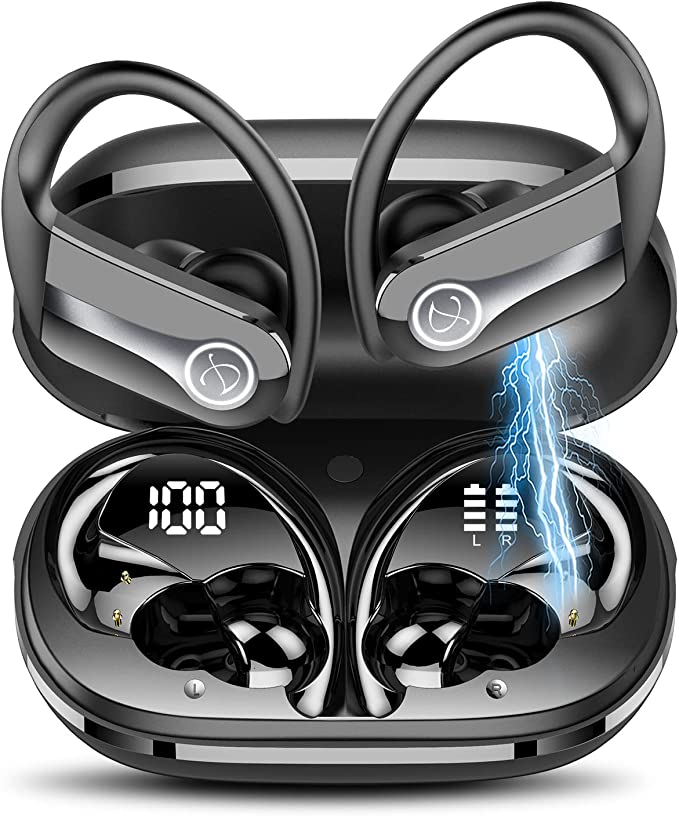TRANYA Upgraded T10 Wireless Earbuds – Expertly Tuned Sound and Low Latency Game Mode
Update on June 21, 2025, 1:43 p.m.
Ever stop to think about the sheer amount of technology packed into those tiny wireless earbuds nestled in your ears? It’s easy to take them for granted, these little gateways to our music, podcasts, and calls. But beneath their sleek exteriors often lies a fascinating world of material science, acoustic engineering, and wireless wizardry. Let’s take a closer look at a contender in the accessible audio space, the TRANYA T10 Wireless Earbuds, and uncover the clever science that makes them tick, especially considering their friendly $35.99 price tag. What secret ingredients allow them to promise “premium deep bass” and “low latency” gaming?

Crafting the Sound: Where Music Takes Shape
The heart of any audio device, the component that actually produces the sound you hear, is called the driver. Think of it as a miniature, highly sophisticated loudspeaker. The TRANYA T10 earbuds boast a 12mm large driver. Now, in the world of in-ear audio, 12 millimeters is quite substantial. Why does size matter here? Imagine a drum: a larger drum skin can move more air and typically produces a deeper, more resonant sound. Similarly, a larger driver diaphragm has the potential to push more air, which is especially crucial for reproducing those low-frequency bass notes that you can feel as much as hear. This contributes to what TRANYA describes as “great power, ultimate depth, and rich layers” in the bass, while also helping to create a wider soundstage – that sense of space and separation between instruments, making your music feel more like a live performance.
But it’s not just about size; the material of this driver is where things get really interesting. The T10s utilize graphene. If you haven’t heard of graphene, it’s often hailed as a “wonder material” in scientific circles. Discovered by Andre Geim and Konstantin Novoselov (who won the Nobel Prize in Physics in 2010 for their work), graphene is a single layer of carbon atoms arranged in a hexagonal lattice – imagine chicken wire, but at an atomic scale. Its properties are astounding: it’s about 200 times stronger than steel, yet incredibly lightweight and an excellent conductor of electricity.
So, what does this super-material do for your sound? A driver diaphragm needs to be very stiff to vibrate accurately without distorting the sound, especially at higher frequencies, leading to “clear vocals and crisp treble.” It also needs to be very light to respond quickly to changes in the audio signal, ensuring that subtle details in the music aren’t lost. Graphene excels here. Its remarkable stiffness-to-weight ratio allows the T10’s diaphragm to vibrate with incredible precision and speed. This means it can reproduce complex musical passages with greater accuracy, from the thump of a kick drum to the delicate shimmer of a cymbal, fulfilling the promise of “expertly tuned sound.”
To give you even more control, the T10s feature a Dual-EQ Design. EQ, or equalization, is essentially a way to sculpt the sound by boosting or cutting specific frequencies. The T10 offers two modes: a “Normal mode,” likely calibrated for a balanced sound suitable for most music genres, podcasts, or classical pieces where fidelity is key. Then there’s the “Bass Boosted mode,” which, as the name suggests, gives those lower frequencies an extra kick, perfect for when you’re listening to EDM, Hip-hop, or just want a more impactful, rumbling bass experience. It’s like having a simple tone control right in your earbuds.

The Unseen Dance: Wireless Freedom and Flawless Sync
Of course, great sound is only part of the equation for wireless earbuds. The connection itself needs to be robust and responsive. The TRANYA T10 employs Bluetooth 5.1. Each iteration of Bluetooth technology brings improvements, and version 5.1 generally offers enhanced connection stability, faster data transmission capabilities compared to older versions, and better power efficiency. Think of it as upgrading from a winding country road to a multi-lane expressway for your audio data – fewer interruptions and a smoother journey from your phone to your ears. This contributes to the “faster connection, more stable transmission” that TRANYA highlights.
One of the biggest bugbears for wireless audio, especially when watching videos or gaming, is latency. This is the perceptible delay between what you see on screen and when you hear the corresponding sound. A high latency can make dialogue feel out of sync or put gamers at a disadvantage. The T10s address this with a dedicated Low Latency Game Mode, claiming to reduce this delay to “near-zero,” specifically “less than 45 msec.” To put 45 milliseconds into perspective, the average human blink takes about 100 to 400 milliseconds! This near-instantaneous audio response is crucial for an immersive experience, ensuring that sound effects in games or dialogue in movies are perfectly synchronized with the on-screen action. While one user, Marissa, mentioned in her review that she “did not notice any real difference when testing this out,” the underlying technology aims to minimize this delay significantly, a feature that many gamers will appreciate.

Beyond the Music: Engineered for Your World
Good earbuds need to be more than just music players; they’re often our companions for calls and our partners during workouts. For clear communication, the T10 features a 4-microphone and noise cancelling system. How does this work? Instead of just one microphone, having an array of four allows the earbuds to be much smarter about sound capture. By comparing the signals received by each microphone, sophisticated algorithms (often referred to as Environmental Noise Cancellation or ENC in a broader sense) can differentiate your voice from ambient sounds like traffic, wind, or office chatter. The system then works to “filter out the surrounding noise and enhance your voice,” ensuring you’re heard clearly on the other end.
When it comes to endurance, the T10s are designed to keep up with your day. They promise 8 hours of listening from a single charge, with the compact charging case holding an additional 24 hours, bringing the total to 32 hours of playtime. This is thanks to efficient Lithium-Ion batteries, the unsung heroes of our portable electronic world, known for their high energy density. And for those moments when you’re short on time, the fast Type-C charging is a lifesaver: just 10 minutes of charging can give you approximately 2 hours of playtime.
Finally, for those who like to take their music on the move, or even to the gym, the IPX7 waterproof rating provides significant peace of mind. The “IP” in IPX7 stands for Ingress Protection. The “X” means it hasn’t been rated for dust protection, but the “7” is the crucial part for water. According to the International Electrotechnical Commission (IEC) standard 60529, an IPX7 rating means the device can withstand immersion in water up to 1 meter deep for up to 30 minutes. So, while you probably shouldn’t go swimming with them, they can easily handle sweat during an intense workout, an unexpected downpour, or even an accidental drop into a puddle. As user Rico Maranto put it, they “work great” even after being worn in the shower. This level of water resistance is achieved through careful sealing of the earbud casings and protection of the internal components.

The Invisible Made Tangible: Appreciating Everyday Science
It’s truly a symphony of science at play within the TRANYA T10 wireless earbuds. From the material marvel of graphene shaping your sound waves, to the intricacies of Bluetooth ensuring a stable, low-latency connection, and the practical engineering of robust waterproofing and long-lasting battery life – it’s a lot of technology to pack into such a small and affordable package.

What the TRANYA T10 demonstrates is that impressive engineering and thoughtful scientific application aren’t solely the domain of ultra-premium, high-priced gadgets. The next time you pop in your earbuds, take a moment to appreciate the invisible ingenuity that allows you to carry your sound, your calls, and your entertainment so effortlessly. It’s a quiet testament to how far consumer electronics have come, making sophisticated technology accessible to almost everyone.
